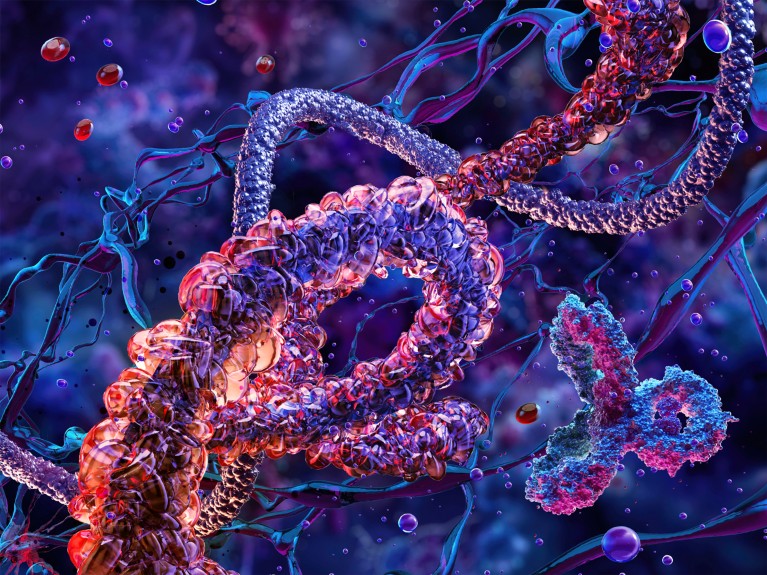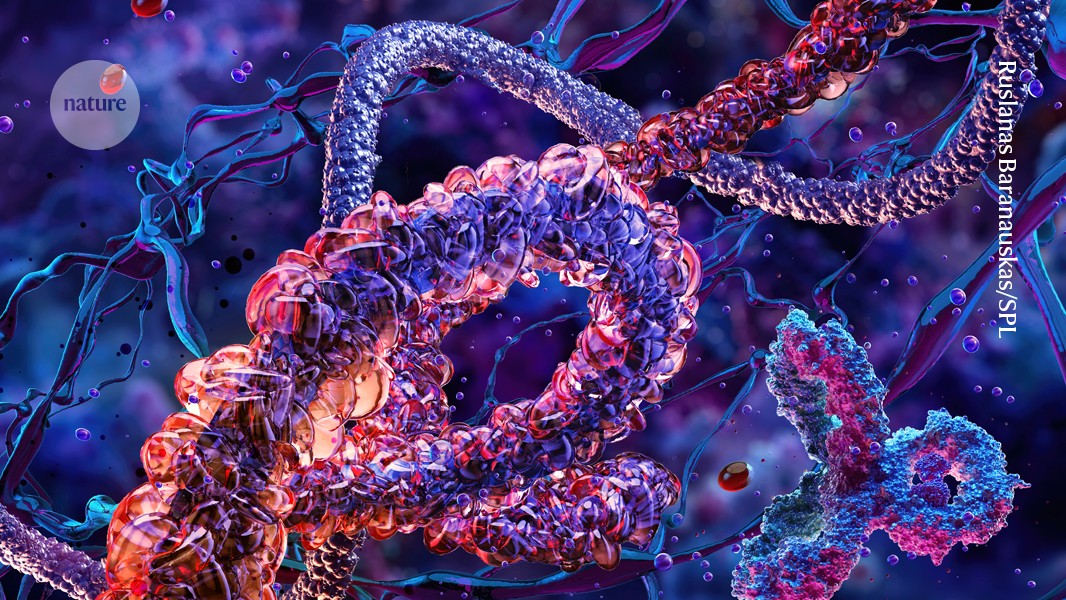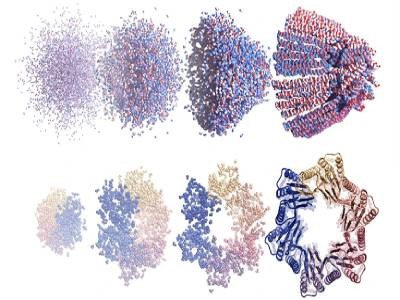
Protein molecules (artist’s illustration) fold into their final shapes. Newly developed editors can swap out bits of a protein for other molecules and amino acids.Credit: Ruslanas Baranauskas/Science Photo Library
A powerful technique that directly edits proteins in living cells promises to help researchers to study proteins in improved ways.
The technique relies on strings of amino acids called inteins, which can autonomously cut themselves out of proteins. Scientists have now harnessed inteins to splice chemical groups, unusual amino acids and even polymers into target proteins, and can observe how such additions affect a protein’s function and cellular location.
The method was described in a pair of papers in Science, one published today1 and one in April2.
The technique is “a very nice addition to the toolbox”, says Mikko Taipale, a molecular geneticist at the University of Toronto in Canada, who was not involved in either study. Just as DNA-editing CRISPR systems have transformed the ability to manipulate genes, intein editors will provide a better way to investigate the form, function and localization of proteins, says Taipale.
But whereas CRISPR is ready for use in living cells, laboratory animals and humans, current protein editors require finicky customization and can be used only in cells. The tools are “good for very specific questions”, says Taipale.
Intein intel
Inteins were discovered in 1990 in baker’s yeast (Saccharomyces cerevisiae), and thousands of these elements have since been identified in other single-celled organisms. “We call them Houdini proteins, because they escape from the bondage of the proteins they’re embedded in,” says Tom Muir, a chemist at Princeton University in New Jersey and a co-author of the Science paper published in April. Although inteins’ biological role remains unclear, for the most part, researchers have long been trying to repurpose inteins as protein editors.
AI tools are designing entirely new proteins that could transform medicine
Progress has been slow: inteins can be hard to work with and are inefficient editors. But Muir’s group designed new inteins that perform better than previously available ones. The paper published today, by George Burslem at the University of Pennsylvania in Philadelphia, and his colleagues, describes intein systems that are easier to produce and use in live cells.The editors, called protein transposons by Muir’s team, require some groundwork. Researchers first have to reprogram the DNA code for the protein of interest. This step adds instructions to encode an ‘acceptor site’ where the edit will be made. The site includes two intein elements at either end.
The researchers then prepare a ‘donor’ protein carrying the desired cargo to be spliced into the target protein. The cargo is bracketed by two more intein elements. When the target protein and the donor align, the split inteins pair up and self-eject from the target protein, taking the rest of the acceptor site with them. The cargo slots itself into the gap.
The process is “cut and paste”, says Burslem.
Quick work
Burslem’s team used the editors to make changes in five different proteins in live cells. The protein editors needed less than ten minutes to do their work, Burslem says. Muir’s team used a different set of editors to tweak three proteins.
“Between the two papers, there’s quite a breadth of different types of proteins that this has been applied to,” says Muir.
These editors provide a powerful new tool for cell-biology experiments, he adds. The tools can be used to add markers to proteins, giving scientists a fresh way to track proteins’ actions and movements. And the editors can paste in stretches of amino acids that will redefine where a protein goes in the cell, give it a new function or force it to interact with another protein of interest.



